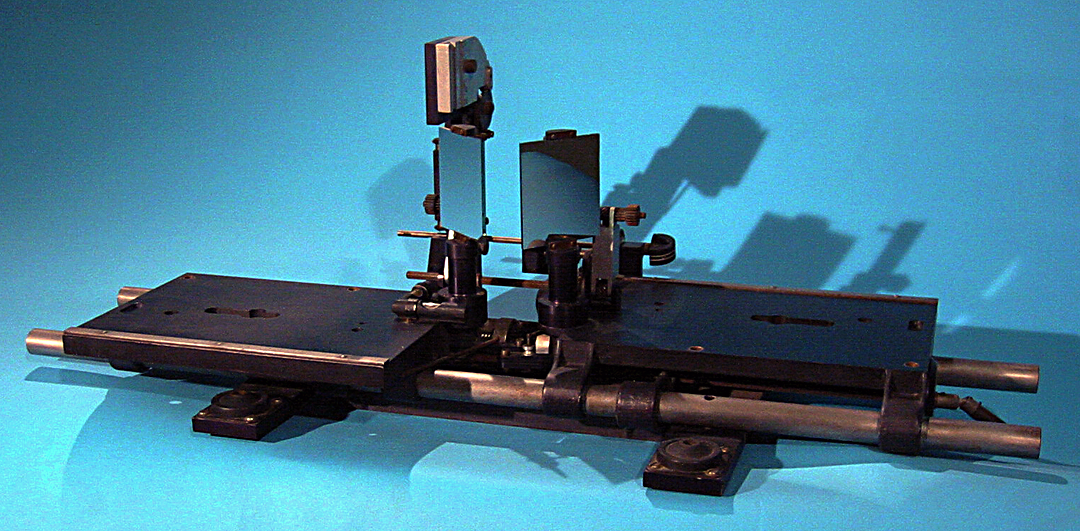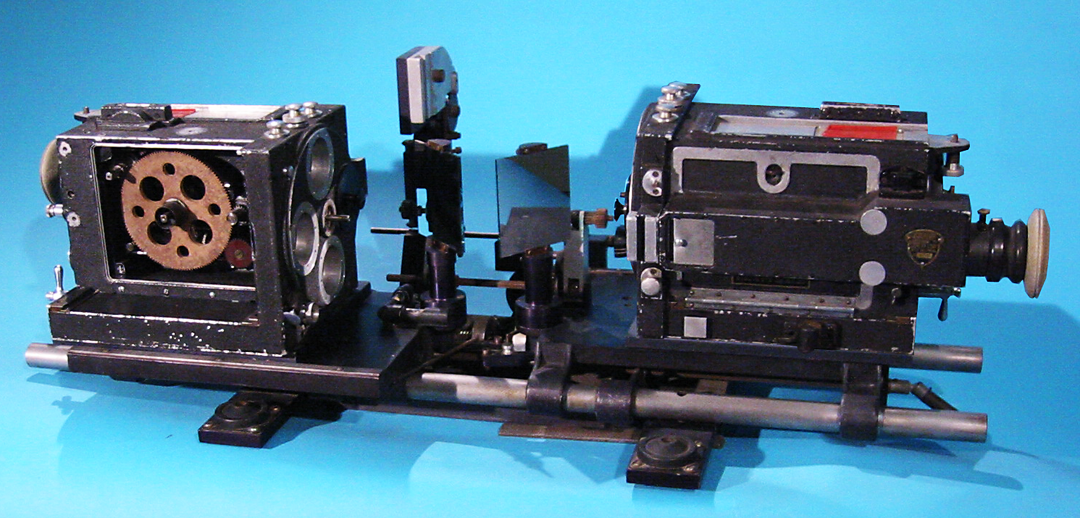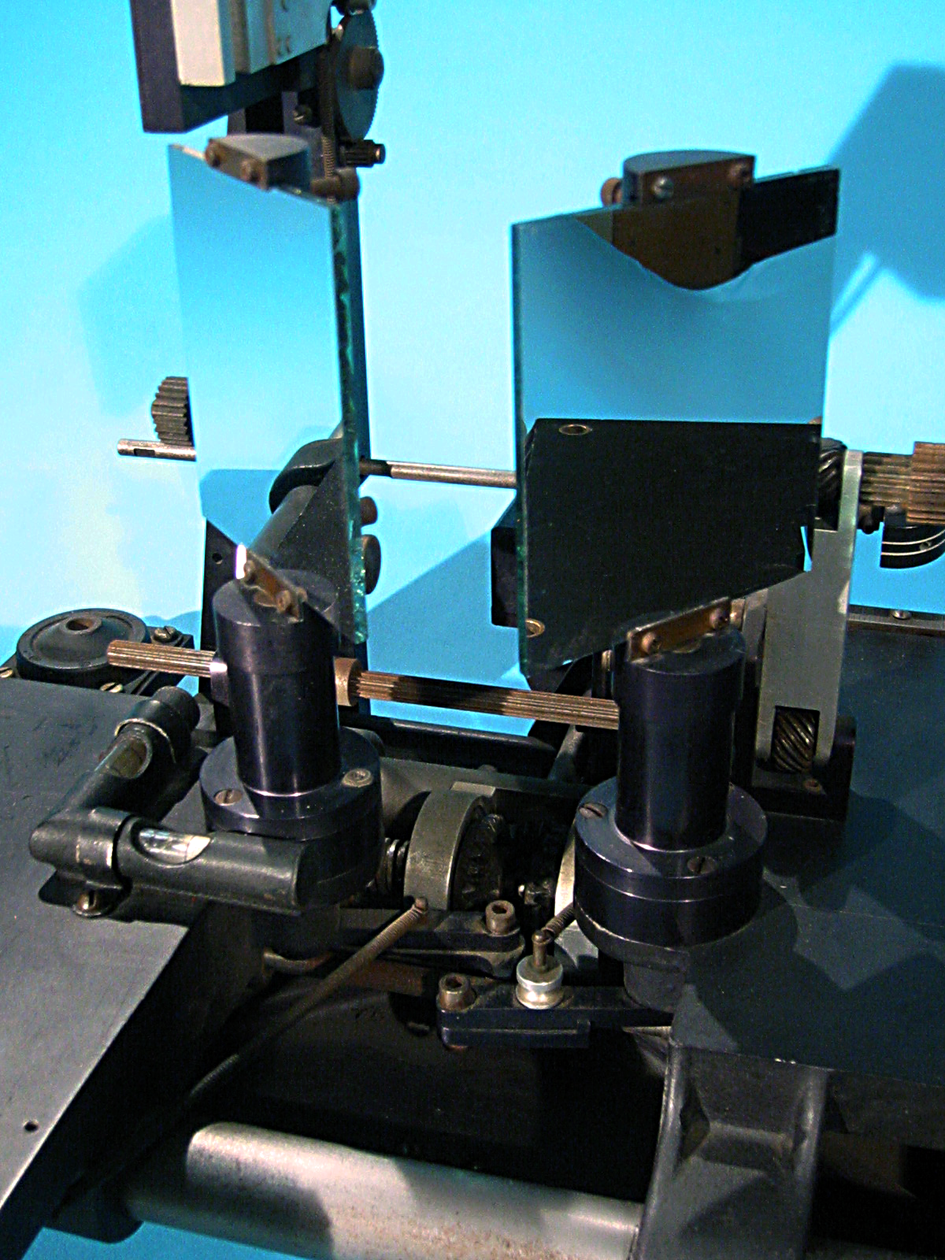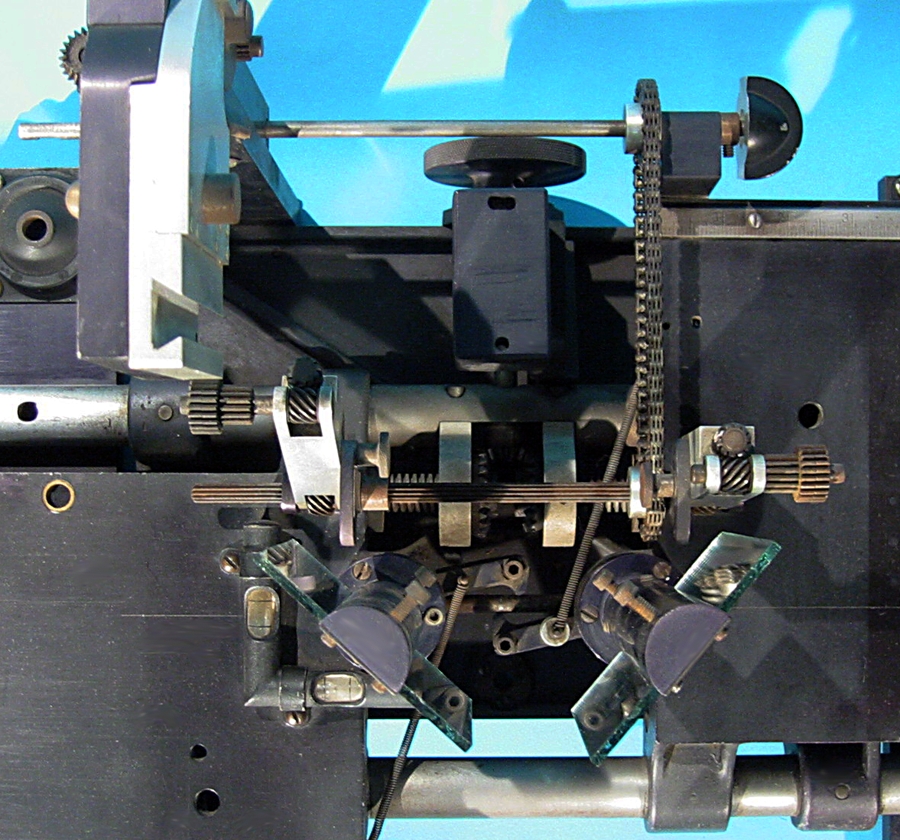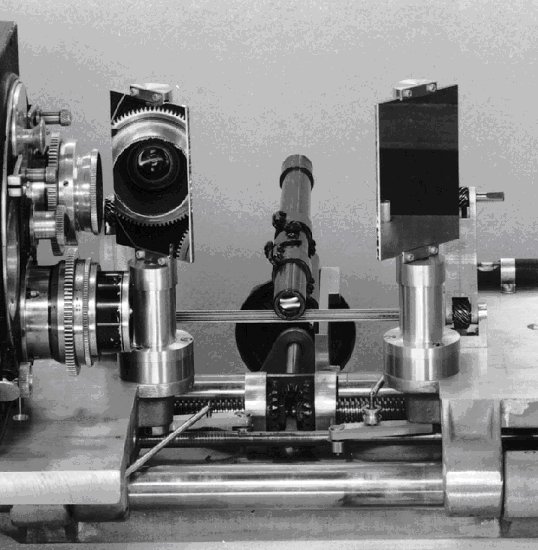This is an early 3D camera rig that was sold to us by equipment vendor Les Day in the late 1980s. We were informed it was one of the NaturalVision rigs used to film the original "House of Wax". There were around 13 NaturalVision films and shorts made during the early 1950s, including "Dial M for Murder" and "Bwana Devil" - so NaturalVision may have made various adaptations of their basic device during this period.
Looking straight down from the top of the mechanisms, you can see the interaxial adjustment knob at top center, and the convergence camshaft and followers at bottom center. At top right is a focus knob (our addition - NOT original!) with focus gearing kept common to both cameras via a sliding spline shaft. At top left you can see a dovetail mount for a (single-eye) viewfinder (not part of the rig). Of course, the viewfinder's parallax is vertically misaligned from the cameras - so a cam adjuster on this pivoting mount permits parallax to be adjusted to follow focus shifts automatically for different focal length lenses.
No provisions for synchronizing two cameras' drives were included with the rig. 3D historian Dan Symmes (R.I.P., Dan) has informed us that this is not one of the original NaturalVision rigs but rather a subsequent model built by the same engineer. He is currently researching this unit's history.
Any inquiries about this *NaturalVision* 3D rig can be directed to Mark Hardin / Motor Reflex:
|
